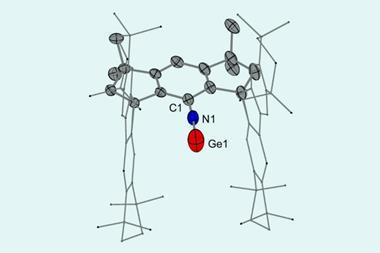Cancelled HIV vaccine trials increase the focus on new antiretroviral drugs
Prospects for an HIV vaccine have receded with the July decision by the US government National Institutes of Health (NIH) to cancel trials of its main vaccine candidate. Combined with Swiss pharmaceutical company Roche’s quiet admission that it has abandoned development of its HIV drug pipeline, the desicions suggest players in the HIV therapy scene are re-evaluating their approach.
According to Margaret Johnston, director of AIDS vaccine research at NIH’s National Institute of Allergy and Infectious Diseases (NIAID), plans to test the vaccine were dropped because the available scientific information ’did not warrant’ large scale trials. NIH’s vaccine works in the same way as Merck’s V520 vaccine, which was withdrawn from clinical trials in September 2007 after failing to prevent infection.
Johnston says NIH is not abandoning its HIV vaccine work, though it is redirecting it efforts towards answering fundamental questions about the HIV virus, rather than developing commercial products.
Despite NIH’s cancelled trial - and warnings from experts that inactivated HIV vaccines are a blind alley, because they cannot produce a strong enough immune response - about 30 HIV vaccines are still being tested. And new ones are still on the way: Atlanta, US-based GeoVax has applied to the FDA for permission to begin a 225-subject Phase II trial of its preventative vaccine. Also, early in July, DNA vaccine developer VGX Pharmaceuticals of Pennsylvania announced it was dropping development of its Pictovir HIV drug candidate to focus on its DNA-based HIV vaccine Pennvax-B, which is in two separate Phase I clinical trials.
But according to vaccine expert Adriano Boasso of Imperial College London, the recent failures in HIV vaccine work may force companies to re-evaluation their HIV strategies, pushing the balance of effort from prevention into drug development. ’Today’s multi-drug therapy is expensive and needs a lot of effort by the patient,’ says Boasso. ’There are good chances of finding better therapies based on integrase inhibitors or fusion inhibitors.’
Class divide
Anti-retroviral combination therapies have cut death rates among HIV-positive people by nearly 40 per cent since their introduction in 1996, according to a new study of 33,000 patients published in The Lancet in July. However, resistance to these drugs is now the leading cause of treatment failure.
Fortunately there is no shortage of new therapies under development, and since 2003, nine new drugs and three new drug classes, including HIV integrase inhibitors, have been approved. HIV integrase is a natural target for new drugs, being key to the merging of provirus into the host genome; also it has no human homologue. Moreover, resistance to these drugs has not yet appeared.
’If a long-term, once-a-day formulation is developed for integrase inhibitors, they could potentially shift from second-line therapy to first-line therapy,’ says Carl Dieffenbach, Director of NIAID’s Division of AIDS.
US drugmaker Merck’s raltegravir is the first integrase inhibitor to be approved for clinical use. Not far behind is biotech firm Gilead, which already dominates the HIV therapy market with Truvada and Atripla, and has now begun a Phase III clinical study of another new integrase inhibitor, elvitegravir. Another US firm, Panacos, is in Phase IIb trials with bevirimat, the first in a new class of HIV drugs called maturation inhibitors. And Los Angeles-based CytoDyn is about to start a Phase II clinical trial of a monoclonal antibody called Cytolin that uses the immune system to control HIV infection.
The increasing competition may well have prompted Roche’s decision to suspend research on new HIV drugs in its pipeline because their performance does not improve on existing products. According to Joseph Kim, head of vaccine developer VGX, the past two years has seen the entry of several novel drugs with better safety and efficacy profiles, which will be very hard to compete against. Moreover, new drugs are very expensive to introduce because they are almost always considered as part of a cocktail therapy, making clinical trials complex and costly.
Incentives
Are pharma companies still interested in AIDS? HIV is predominantly an infection of the developing world, but there are still plenty of financial incentives to treat it. Of the 33 million people worldwide living with HIV, a million are in the US, of whom 475,000 are under treatment. ’At least 40,000 Americans get infected with HIV every year, making HIV/AIDS a formidable health problem in the United States,’ said Dieffenbach.
But according to Boasso, the key incentive for companies is not so much profit as prestige. ’I don’t think there is any lack of interest in developing an efficient therapy against HIV, it would obviously be in the interests of any company. Who would not want to be the one who achieved it?’
Pete Mitchell
Enjoy this story? Spread the word using the ’tools’ menu on the left.
References
The Antiretroviral Therapy Cohort Collaboration, The Lancet, 2008, 372, 293 (DOI:10.1016/S0140-6736(08)61113-7)






No comments yet